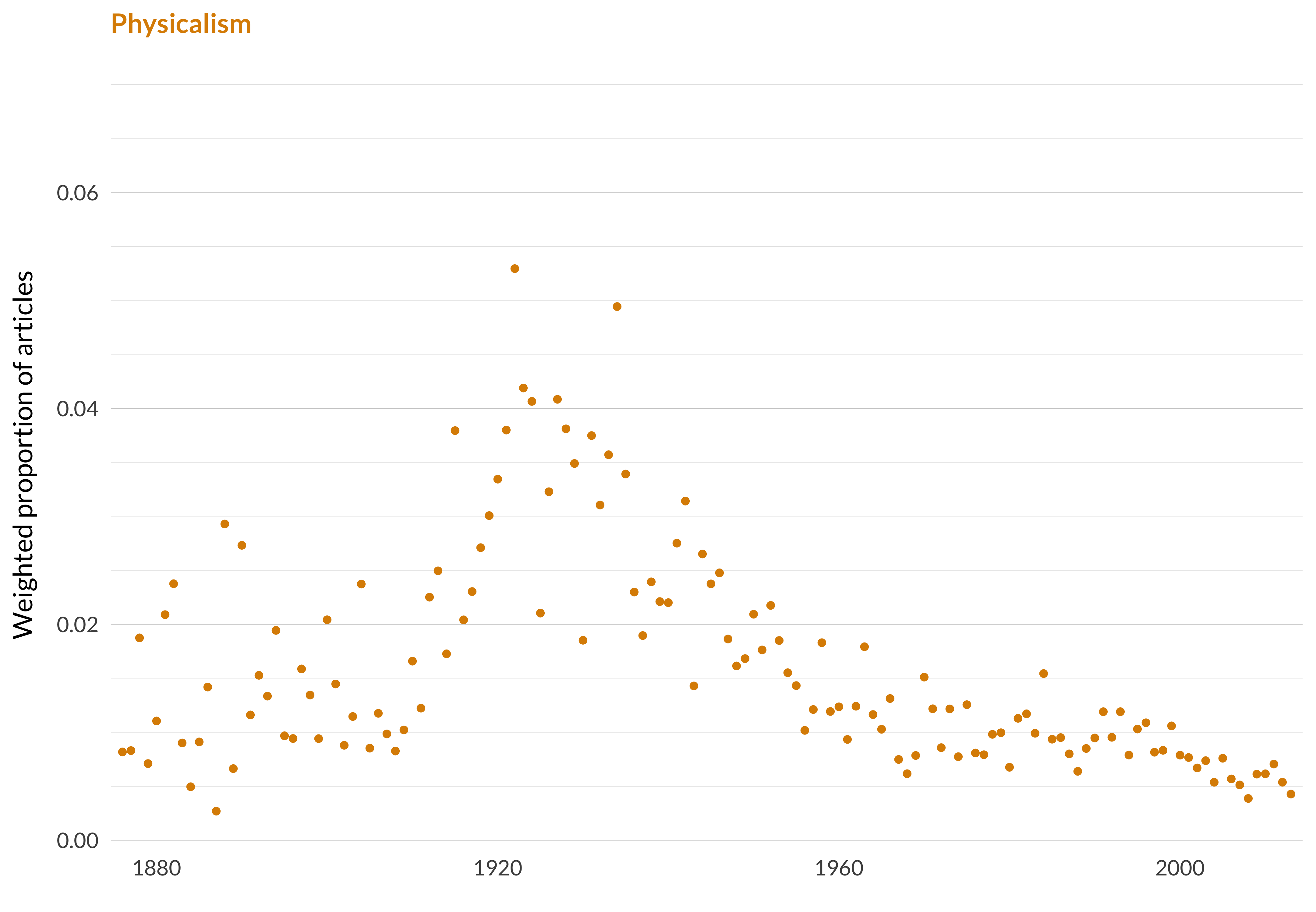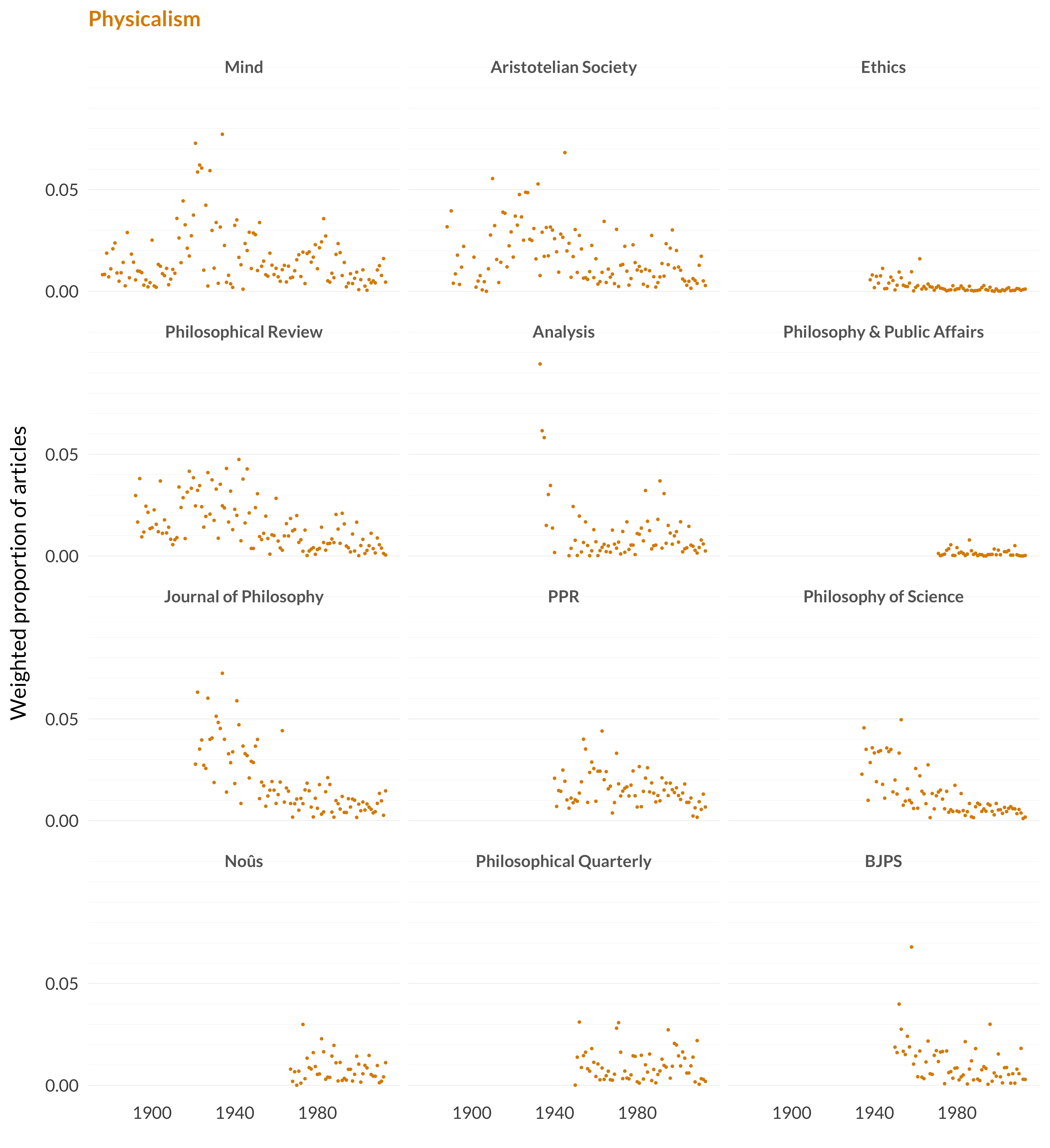2.9 Physicalism
Category: Philosophy of Mind
Keywords: physicalism, dualism, sellars, physical, datum, materialism, minds, smart, mental, data, brain, physically, body, mind, broad
Number of Articles: 401
Percentage of Total: 1.2%
Rank: 31st
Weighted Number of Articles: 425.8
Percentage of Total: 1.3%
Rank: 20th
Mean Publication Year: 1954.7
Weighted Mean Publication Year: 1957
Median Publication Year: 1953
Modal Publication Year: 1922
Topic with Most Overlap: Perception (0.0459)
Topic this Overlaps Most With: Perception (0.0377)
Topic with Least Overlap: Crime and Punishment (0.00027)
Topic this Overlaps Least With: Formal Epistemology (4e-04)

Figure 2.29: Physicalism.

Figure 2.30: Physicalism articles in each journal.
Comments
I really didn’t expect this. I sort of thought that physicalism, in the way it was discussed by contemporary writers, was quite distinct from what early twentieth-century writers were talking about. And I thought that even if that weren’t true, the terminological changes—using language like “supervenience” and “physicalism” that I thought was not common in the early twentieth century—would have been enough to get the model to split up Stoljar and Montero from Stebbing and Trumbull Ladd. But the model thinks that they fit together, and I can sort of see its point of view. The mind-body problem is one of the oldest and most venerable problems around. Actually, since I’m discussing Stoljar, I should at this point acknowledge his good point that it is a class of problems not a problem, and missing this point leads one to seriously misstate the history of work in this field (Stoljar 2017). It was a big deal in nineteenth-century philosophy, it is a big deal in twenty-first-century philosophy, and, apparently, it was an even bigger deal in philosophy in the 1920s and 1930s.
The only thing that disappoints me about the model’s result here is that it put almost none of Samuel Alexander’s work in this topic. I’d have thought the preeminent emergentist of the early twentieth century would play an important role in debates about physicalism, but the model disagreed, and I’m not entirely sure why it did so.